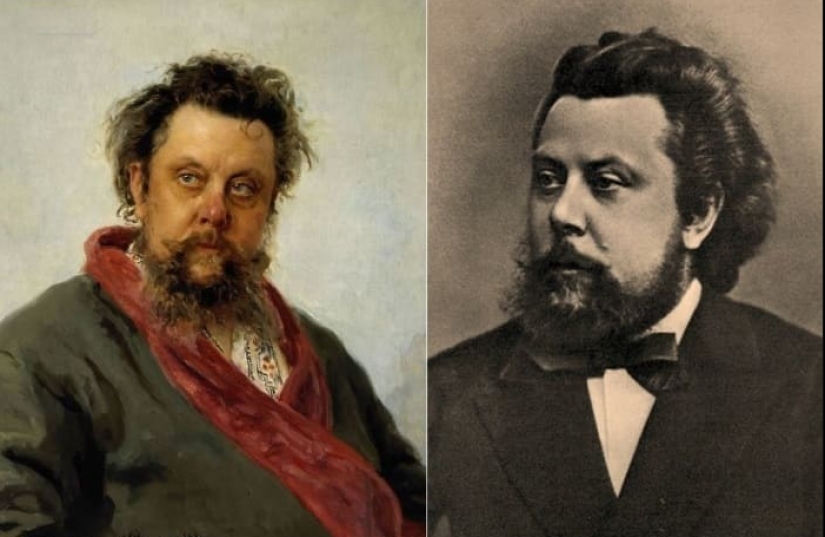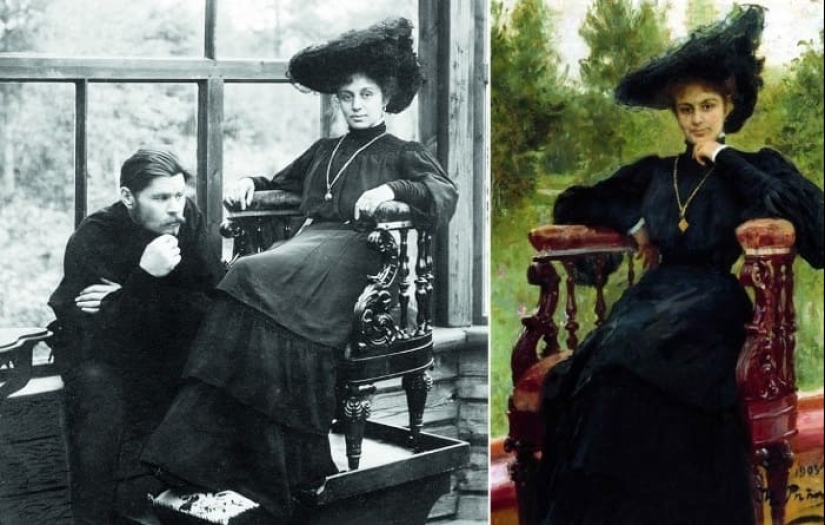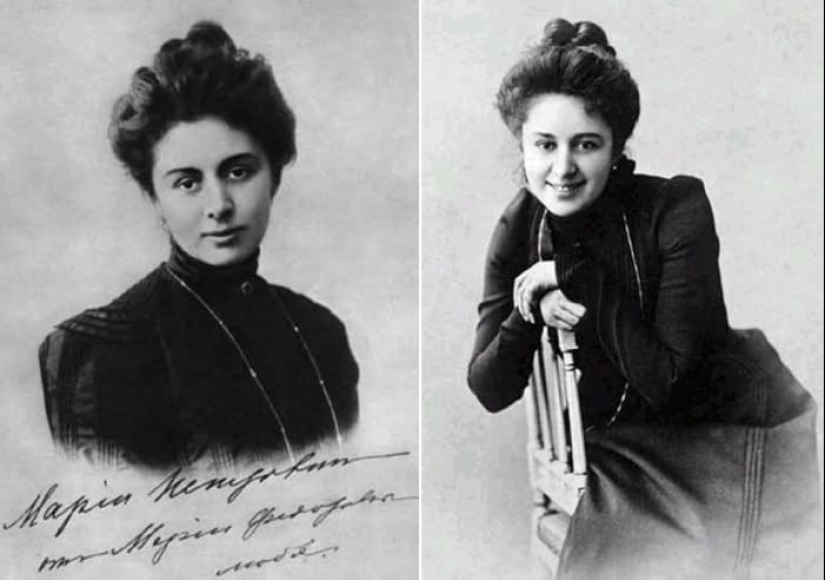Find 10 differences: contemporaries of Repin in his portraits and in life
Many historical figures are familiar to us only from sculptures and portraits, so we have to judge their appearance by other people's interpretations. Fortunately, there was a short period in history when photography had already appeared and classical painting had not yet become a thing of the past. Let's compare how people looked "in life" and in portraits, using the example of Ilya Repin — one of the greatest portraitists in history, who was also a subtle psychologist.



Leftward: Maxim Gorky and Maria Andreeva pose for Repin. 1905. Right: portrait of Maria Andreeva, made by Repin in 1905.

The fatal Maria Fyodorovna Andreeva (nee Yurkovskaya) was one of the most famous and influential actresses of the early twentieth century: she helped Stanislavsky open the Moscow Art Theater, charmed Savva Morozov and turned his feelings to financing the needs of the theater and the party. She was familiar with Repin since childhood and at the age of 15 posed for illustrations for Pushkin's "Stone Guest": the artist painted Donna Anna from it.
In 1900, when the Moscow Art Theater went to Sevastopol to show Chekhov "The Seagull", the writer introduced Andreeva to Maxim Gorky. Around the same time, she became interested in Marxist literature, began to get close to the Bolsheviks and help them in party affairs. Even in the RSDLP, the actress joined before Gorky. A few years later, Andreeva became the writer's common-law wife and his literary secretary. After moving to Finland, they often visited the Repin estate and posed for the artist's portraits.
Even before this portrait was finished, the writer Alexander Kuprin and his wife saw it: they were invited to the studio to read Gorky's play "Children of the Sun". When Repin asked what Kuprin thought of the painting, he hesitated: "The question took me by surprise. The portrait is unfortunate, it does not look like Maria Fyodorovna. This big hat casts a shadow on her face, and then he (Repin) gave her face such a repulsive expression that it seems unpleasant. I felt uneasy, didn't know what to say right away, and didn't say anything. Repin looked at me carefully and said: "You didn't like the portrait. I agree with you-the portrait is unsuccessful."
Ilya Repin was a friend of the composer Modest Mussorgsky and a fan of his work. He knew about his friend's drunkenness and wrote bitterly about it:
When the artist learned that Mussorgsky was in a serious condition in the hospital, he went to him and in four sessions (from 2 to 5 March 1881) painted this portrait. According to an eyewitness, it was necessary to work "with all sorts of inconveniences; the painter did not even have an easel, and he had to somehow perch at the table in front of which Mussorgsky was sitting in a hospital chair." The composer died 10 days later. The artist refused to pay for the work, donating money for a monument to his late friend.
Repin and Tolstoy were warm friends for almost 30 years, until the writer's death. Repin created 3 busts of the writer, 12 portraits, 25 drawings, 8 sketches of members of the Tolstoy family and 17 illustrations to Tolstoy's works — both in watercolor, pen, and pencil. Even after moving to St. Petersburg, Repin met Tolstoy on every visit to Moscow. In his memoirs, the artist confessed that in the presence of Lev Nikolaevich, as if hypnotized, he could only obey his will, and every position expressed by Tolstoy seemed to him at that moment indisputable. The writer criticized Repin's paintings and suggested details to him, and said admiringly about one of the works: "The skill is such that you can not see the skill!»
Tolstoy's eldest daughter Tatyana Sukhotina, who also became his model, also visited the artist's house. Tatyana Lvovna was fond of painting and copied the portraits of her father made by Repin (although she did not dare to write a new one). After the revolution, she even opened a drawing studio in Moscow.
Valentin Serov began drawing on the recommendation of Repin, at the age of 9, and the established artist spent six years studying with a teenager. In Serov's mother Valentina Semyonovna Repin found the features of the proud Tsarevna Sophia Alekseevna. He had long wanted to paint the Princess Sophia in prison, but could not find a model, and here he was lucky.
In the painting "Princess Sophia", the artist combined sketch portraits of the translator Blaramberg-Apreleva, the dressmaker and Valentina Serova. It is believed that Sophia has a little portrait resemblance to the artist's mother: it was important for Repin to create a collective image and show the strength of spirit, perseverance and unbroken will of a woman.
Repin repeatedly offered his friend Pavel Tretyakov to pose for his portrait, but the gallery owner did not agree for a long time: he was a closed person and did not want to be recognized. Lost in the crowd of visitors to his exhibitions, he could, without being recognized, hear their sincere reviews. Repin believed that everyone should know the face of one of the most outstanding cultural figures of the era, and yet persuaded him to paint a portrait. The artist depicted his friend in his usual pose, absorbed in his thoughts, in his favorite gallery. Contemporaries called the portrait successful and recognized in it the modest spiritual Tretyakov-such as he was in life.
Contemporaries of Alexey Feofilaktovich Pisemsky argued that Repin managed to capture the character of the writer very accurately-sarcastic,skeptical, mocking — and that his work went beyond the usual portrait. But the writer's gaze is also marked by longing: Repin knew that the writer was unwell and addicted to alcohol, that one of his sons had committed suicide, and the other was terminally ill, and showed this in the picture. The portrait was made a year before the writer's death.
A special tenderness is imbued with the portrait of the artist's eldest daughter Vera in the painting "Autumn Bouquet". In a letter to Tatyana Sukhotina (Tolstoy), Repin shared: "I begin the portrait of Vera, in the middle of the garden with a large bouquet of coarse autumn flowers, with a boutonniere of thin, elegant ones; in a beret, with an expression of a sense of life, youth, bliss."
Keywords: Culture | Russian Federation | Photography | Painting | Artist | 19th century | Portraits | Realism
